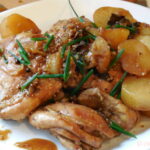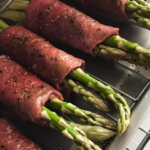
Contents
Vietnam is known as a vegan-friendly country, with plenty of vegan restaurants. There are many places that offer vegan menus or even serve their usual without meat. Vietnamese vegetarian food is everywhere in the country, as it is abundant with fresh vegetables and fruits.
Vietnamese vegan food emphasizes the use of fresh vegetables accompanied by powerful spices. One of the most famous dishes is spring rolls. Here is how to make vegan Vietnamese spring rolls.
Vegan Vietnamese Spring Rolls Recipe

Ingredients
To prepare the veggies, you need to wash and cut them into thin, matchstick-like pieces to get a consistent and crunchy texture. Cut them evenly.
- Red cabbage
- Carrot
- Cucumber
- Lettuce
- Extra firm tofu (recommendation)
- Green onion
- Cilantro
- Mint
- Rice paper
Instructions
- Dip the rice paper in the warm water for just 2 to 3 seconds, since it will soften as you begin to place the veggies.
- Lay the wet rice paper on a flat surface, then start arranging with the lettuce, cabbage, carrots, cucumber, tofu, and herbs. Don’t over stuff the rolls since they can break easily. Layer the ingredients on the edge closest to you at the 1/3 mark for wrapping purposes.
- Bring the edge up and over the veggies. Try to keep the fillings compact by tucking them in as you roll upwards.
- At the 2/3 mark, pull each side over to enclose the filling. Continue rolling and tucking until finished. Repeat the steps for each roll.
Remember not to soak the rice paper for too long, as it will soften up when you fill it with the ingredients. If you soak it for too long, it will become too soft and easy to tear when you roll it up.
Of course, this vegan Vietnamese food is best served with peanut sauce. Here is a simple way to make the peanut sauce.
Spring Rolls Peanut Sauce Recipe
Ingredients
- Peanut butter
- Low-sodium tamari or soy sauce
- Fresh ginger and garlic
- Maple syrup
- Rice vinegar or white wine
- Red pepper flakes (optional)
- Water
Steps
- In a small bowl, whisk together all the ingredients except water. Mix until completely incorporated.
- Add 2 to 3 tablespoon of water as needed to make the sauce creamy according to your desired thickness. Serve it.
The vegan Vietnamese recipes are low in calories and easy to make. If you want to make the sauce gluten-free, use tamari instead of soy sauce. You can eat them whole or sliced in half according to your taste.
You can store these vegan Vietnamese spring rolls in the refrigerator for up to 3 days. Remember to bring the rolls to room temperature for about 30 minutes before eating because the water in the veggies and other ingredients can start to leak out and break down the rice paper.
Vietnamese Vegetarian Cookbooks
If you are curious about other Vietnamese vegetarian recipes, you can check these recommended cookbooks.
1. Vegetarian Viet Nam – Cameron Stauch
This vegan Vietnamese cookbook is based on recipes devised over centuries by Mahayana Buddhist monks. Cameron Stauch makes full use of Vietnamese herbs and sauces to make tofu, mushrooms, and vegetables burst with reference to the experience he spent living and cooking in Vietnam.
It is equipped with colorful photographs to give you guidance on the finished products. Stauch also adds lots of Vietnamese culture and stories that provide the context so that the recipes become especially vibrant and delicious.
2. Ever-Green Vietnamese – Andrea Nguyen
“Ever-Green Vietnamese” by Andrea Nguyen features 125+ plant-based Vietnamese recipes, showcasing herbs, vegetables, and seafood. With flavor-boosting condiments, exciting tofu dishes, and vegetable-driven mains, this cookbook provides traditional flavors with a modern, plant-based twist.
It’s a highly acclaimed cookbook, named one of the best of the year by The New York Times, Los Angeles Times, Food Network, Good Housekeeping, San Francisco Chronicle, and Epicurious.
3. Vegan Vietnamese – Helen Le
Discover how to make 70 classic Vietnamese dishes vegan-style with “Vegan Vietnamese” by Helen Le, the renowned creator of the popular YouTube channel Helen’s Recipes. Whether you’re vegan, plant-based, or simply reducing meat intake, this cookbook offers traditional recipes transformed into tasty plant-based versions.
From condiments to desserts, including pho, bánh mì, and crispy spring rolls, Helen Le’s guide provides easy-to-follow instructions and beautiful photos, making it easy to enjoy Vietnamese cuisine at home.
As there are plenty of dishes you can choose from in Vietnamese food, you can take your time exploring your favorites. Vegan Vietnamese cuisine is no doubt a great choice for people who want to eat low-calorie and healthy food. With the knowledge of these recipes, you won’t eat bland anymore if you want to go healthy.








